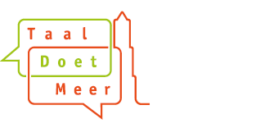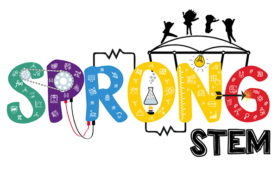The Challenge of Multilingual Mathematics
Mathematics contains a multitude of technical terms, such as perimeter or hexagon, that children need to add to their vocabulary. Then there are the day-to-day words such as table or borrow that have a completely different meaning within mathematics than in daily life1. And we’re just talking words now! Don’t forget the dense noun phrases, conjugations with technical meanings, and implicit logical relationships they need to come to understand2.
Besides the academic language, culture and language also influence the (manner of) learning mathematics. One may think that at least in writing mathematics is the same worldwide, but then we’re not taking into account the difference in mathematical symbols (e.g. division can be represented using ÷, / or : ). Furthermore, problem solving strategies differ across nations.3 And did you know that even space is interpreted differently, depending on culture? For example, in English, an address is written from the smallest space (unit or house number) to the biggest space (country name), whereas in Chinese one starts the address with the largest space and ends with the smallest space4.
Imagine now, a young child, learning in a new language. Not only does this child have the challenge of learning to understand instructions in the language of schooling, but also of grasping the vocabulary, abstract meanings, and nuances of mathematical language. This is why translanguaging – enabling the use of all available languages – is not merely a matter of translation, but a manner of accessing prior knowledge, understanding cultural differences, and connecting the home world to the school world. A manner of increasing access to mathematical content knowledge and empowering young learners to voice themselves clearly.

Have two Turkish-speaking students who spend their summers in Türkiye make a bilingual model of a swimming pool, and solve equations for area, perimeter and volume to help students connect both their languages and knowledge. Encourage a caregiver to talk about the concepts of “more” and “less” in the home language to assist a student who is learning these concepts in the Dutch classroom. Allow students to access online learning material in the language of their choice. Invite caregivers into the classroom to lead small groups in math games with students who speak the same language(s).
Can you think of more ways to access children’s mathematical knowledge in all their languages?
Hanneke Baart | PhD researcher, Translanguaging & Digital Tools
Currently, this blog is only available in English and Dutch. To read it in another language we recommend using the translation tool DeepL.com.
1. Cavanagh S. Math: The Not-So-Universal Language. Education Week. 2005;24(42):1-22.
2. Schleppegrell MJ. The Linguistic Challenges of Mathematics Teaching and Learning: A Research Review. Reading & Writing Quarterly. 2007;23(2):139-159. doi:10.1080/10573560601158461
3. Freeman B, Crawford L. Creating a middle school mathematics curriculum for English-language learners. Remedial Spec Educ. 2008;29(1):9-19. doi:10.1177/0741932507309717
4. Leung FKS. Making Sense of Mathematics Achievement in East Asia: Does Culture Really Matter? In: Kaiser G, ed. Proceedings of the 13th International Congress on Mathematical Education ICME-13 Monographs. Springer International Publishing; 2017:201-218.

















